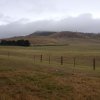Heftiger
Pre-takeoff checklist
- Joined
- Nov 13, 2013
- Messages
- 335
- Display Name
Display name:
Heftiger
I'm looking at planning a trip this weekend and haze is causing a problem. I'm a PP, not IFR rated. Visibility in the afternoon hovers around 2-3 SM. If I fly in to airport 1, and discover weather at airport 2 has deteriorated to 2 SM, can I request special VFR on the ground at airport 1 in to airport 2?
Sent from my iPhone using Tapatalk
Sent from my iPhone using Tapatalk

